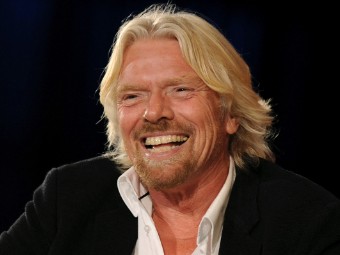John Cadbury (1801-1889)
John Cadbury was born in Birmingham, England, on
12th August 1801. He was from a Quaker family and
did not have the option to go to university as this was
against Quaker beliefs. Instead he became an
apprentice to a tea dealer in Leeds in 1818. He opened
a grocer’s shop at 93 Bull Street, Birmingham in 1824,
selling amongst other things, cocoa and drinking
chocolate, which he prepared himself using a mortar
and pestle. Tea, coffee, cocoa and drinking chocolate
were seen as healthy alternatives to alcohol, which as
a Quaker he believed was bad for society.
After several years, John decided to start
manufacturing on a commercial scale. In 1831 he
purchased a warehouse in nearby Crooked Lane. The
earliest preserved price list from 1842 shows that he
was selling 16 lines of drinking chocolate in cakes and powder format, and eleven lines
of cocoa in powder, flakes, paste and cocoa nibs formats. He was only selling one line
of eating chocolate at this time. In 1846 John took his brother Benjamin into partnership
and the name of the firm was changed to Cadbury Brothers.
In 1847 the business moved to a new factory in Bridge Street. . The partnership with
Benjamin was dissolved by mutual consent in 1856 and John retired in 1861, handing
over complete control of the business to his two sons, Richard and George. The
following decades saw the Cadbury business grow to become an industry leader by
harnessing the opportunities of industrialisation and creatively marketing to a growing
consumer class.
John Cadbury spent his retirement engaged in civic and social work in Birmingham.
Philanthropy had been important to him all his life; over the years he had led a
campaign to ban the use of boys as chimney sweeps, campaigned against animal
cruelty and formed the Animal Friends Society, a forerunner of the RSPCA. John died
on May 11th 1889, aged 87.
Early Days - A One Man Business

Birmingham 1824
John Cadbury was one of ten children of Richard Tapper Cadbury, a prominent Quaker who had moved to Birmingham, England from the West Country in 1794.
In 1824, 22-year-old John Cadbury opened his first shop at 93 Bull Street, next to his father's drapery and silk business in the then fashionable part of Birmingham.
Apart from selling tea and coffee, John Cadbury sold hops, mustard and a new sideline - cocoa and drinking chocolate, which he prepared using a mortar and pestle.
Cocoa and drinking chocolate had been introduced into England in the 1650s but remained a luxury enjoyed by the elite of English society. Customers at John Cadbury's shop were amongst the most prosperous Birmingham families, the only ones who could afford the delicacy. Cocoa beans were imported from South and Central America and the West Indies.
Experimenting with his mortar and pestle, John Cadbury produced a range of cocoa and chocolate drinks, the latter with added sugar. The products were sold in blocks: customers scraped a little off into a cup or saucepan and added hot milk or water.
John Cadbury had a considerable flair for advertising and promotion. "John Cadbury is desirous of introducing to particular notice 'Cocoa Nibs', prepared by himself, an article affording a most nutritious beverage for breakfast," announced his first advertisement in the Birmingham Gazette in March 1824.
He soon established himself as one of the leading cocoa and drinking chocolate traders in Birmingham. The popularity and growing sales of John Cadbury's cocoa and drinking chocolate of 'superior quality' determined the future direction of the business.
In 1831, John Cadbury rented a small factory in Crooked Lane not far from his shop. He became a manufacturer of drinking chocolate and cocoa, laying the foundation for the Cadbury chocolate business.
These early cocoa and drinking chocolates were balanced with potato starch and sago flour to counter the high cocoa butter content, while other ingredients were added to give healthy properties.
By 1842, John Cadbury was selling sixteen lines of drinking chocolate and cocoa in cake and powder forms.
The Quaker Influence
The Cadbury family were prominent members of the Society of Friends or Quakers, one of the many nonconformist religious groups formed in the 17th century. Their strong beliefs carried into campaigns aimed at ending poverty and deprivation and many prominent Quaker-run businesses were part of reforms of social and industrial society in Victorian Britain.
John Cadbury's lifelong involvement with the Temperance Society influenced the direction of his business enterprise. By providing tea, coffee, cocoa and chocolate as an alternative to alcohol he felt he was helping to alleviate some of the alcolohol-related causes of poverty and deprivation amongst working people. He also incorporated some of these principles in his industrial relations philosophy. (See
A Progressive Workplace)
Cadbury Brothers of Birmingham

John Cadbury
As the enterprise prospered, in 1847 John Cadbury rented a larger factory in Bridge Street, off Broad Street, in the centre of Birmingham and went into partnership with his brother Benjamin - trading as Cadbury Brothers of Birmingham.
The retail side of the business in Bull Street was passed to a nephew, Richard Cadbury Barrow in 1849. Barrow Stores, as it became, traded in Central Birmingham until the 1960s.
A major turning point for the cocoa and chocolate industry came in the mid-1850s, when taxes on imported cocoa beans were reduced by Prime Minister William Gladstone. The previously prohibitive chocolate products were now within the reach of the wider population.
Cadbury Brothers received their first Royal Warrant on February 4, 1854 as 'manufacturers of cocoa and chocolate to Queen Victoria.' The company continues to hold royal warrants of appointment.
During the 1850s business began to decline. The partnership between the first Cadbury brothers was dissolved in 1860, a difficult time in the company's history.
John Cadbury's sons Richard and George, who had joined the company in the 1850s, became the second Cadbury brothers to run the business when their father retired due to failing health in 1861.
John Cadbury devoted the rest of his life to civic and social work in Birmingham until his death in 1889.
Although they had worked in their father's business for some years, the prospects for Richard. 25, and George, 21, were daunting. Their first five years were a period of unremitting toil with few customers, long hours and very frugal living. Both seriously considered taking up other vocations - Richard as a surveyor in England and George as a tea planter in India.
George was focused on manufacturing, and Richard with sales, but in the early days both brothers went out and promoted their goods. Due to their dedication, sheer hard work and improvements in the quality of Cadbury cocoa products, the business survived and prospered.
Technological Advancements

Historic packaging
Dissatisfied with the quality of cocoa products, including their own, the Cadbury brothers took a momentous step in 1866 that not only had a bearing on their business but revolutionised the whole of the British cocoa business.
Until that time English cocoa had been heavily adulterated with starch substances like potato flour or sago to mask the excess cocoa butter. The cocoa drink, as described by George Cadbury himself, was a "comforting gruel".
Following a visit to the Van Houten factory in Holland to see their new cocoa press, the brothers introduced this new process to their Bridge Street factory. The press removed some of the cocoa butter from the beans, producing a less rich and more palatable cocoa essence - the forerunner of the cocoa we know today.
There was no need to add flour and Cadbury's new cocoa essence was advertised as 'Absolutely pure...therefore Best'
At that time there was much concern in Parliament about the adulteration of food, including cocoa. The new unadulterated Cadbury's cocoa essence was heralded as a major breakthrough and resulted in the passing of the Adulteration of Food Acts in 1872 and 1875. Cadbury received a remarkable amount of free publicity during this period and sales increased dramatically.
The marketing of this cocoa essence helped turn a small business into a vast worldwide company.
The introduction of cocoa essence was not the only innovation that improved the Cadbury Brothers' trade. The plentiful supply of cocoa butter remaining after the cocoa was pressed made it possible to produce a wide variety of new kinds of 'eating chocolate,' leading to the development of the smooth creamy chocolate produced today.
The quality of the chocolates made by the company following the introduction of the cocoa press was such that in the 1870s, Cadbury broke the monopoly which French producers had previously enjoyed in the British Market.
Cadbury's Chocolate Box
A chocolate for eating had been produced at the Cadbury factory since 1849 but it was not, by today's standards, a very palatable product. With the availability of cocoa butter a new chocolate recipe produced chocolate similar to that which we enjoy today.
Refined plain chocolate was made for moulding into blocks or making bars and chocolate creams that with chocolate-covered fruit-flavoured centres.
Cadbury's "fancy chocolates"- or assortments as they are now called - were sold in decorated boxes, with small pictures that children could cut out to stick into scrapbooks.
Richard Cadbury applied his considerable artistic talents to introduce more ambitious and attractive box designs from his own paintings, using his own children as models or depicting flowers and scenes from his travels. They were the first British-made fancy chocolate boxes and were very popular. Some of his original boxes still exist.
Elaborate chocolate boxes were much prized as special gifts by the late Victorians as they could later be used as trinket or button boxes. Chocolate box designs ranged from superb velvet covered caskets with bevelled mirrors and silk lined jewel boxes to pretty boxes with pictures on the lid.
The popularity of these splendid Cadbury boxes continued until their disappearance during the Second World War. Victorian and Edwardian chocolate boxes are now collector's items.
Cadbury Brothers Ltd
The business became a private limited company - Cadbury Brothers Limited - in 1899 following Richard Cadbury's sudden death at the age of 63.
George Cadbury became chairman of the new board and his fellow directors were Barrow and William A. Cadbury, sons of Richard and two of his own sons, Edward and George Cadbury Junior.
By 1899, the Bournville factory had trebled in size with more than 2,600 employees. With the formation of the limited company, Bournville entered a new era as the younger members of the Board introduced new ideas - analytical laboratories, advertising and cost offices, a sales department, works committee, medical department, pension funds, education and training for employees.
The Bournville factory site became a series of factories within a factory, as everything needed for the business was produced on site, including tin box pressing plants, carton making units, a design studio and printing plant.
This policy continued until well after the Second World War when the rationalisation of the business to mainstream activity - production and marketing of chocolate confectionery- led to the use of outside specialised suppliers for ancillary items.
http://www.cadbury.co.uk/the-story







































.jpg)

